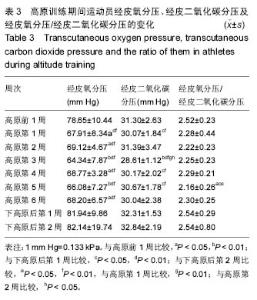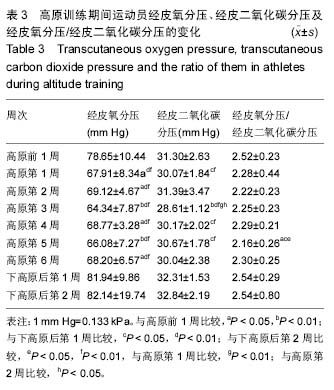| [1] 朱欢,高炳宏.赛艇运动员重大比赛前不同训练阶段无创微循环相关指标变化初步研究[J].现代生物医学进展, 2015,15(10):1927-1930.[2] 张昊楠,高炳宏. 优秀男子赛艇运动员重大比赛前不同训练阶段TcPO2与TcP-CO2的变化特点及与机能状态的关系[J].体育科研,2013,34(2):80-84.[3] 刘婷婷.不同运动项目运动员微循环相关指标特点的比较研究[D] .上海:上海体育学院,2013.[4] 朱天钧.微循环相关指标在男子赛艇运动员机能状态监控中的应用研究[D] .陕西:西安体育学院,2012.[5] 李秋,廖琳,管庆波.糖尿病下肢病变及膝下动脉腔内成形术[J].山医药,2008,48(10):106-107.[6] Rossi M,Carpi A. Shin microcirculation in peripheral arterial obliterative disease.Biomed Pharmacother. 2004;58(8):427-431.[7] 朱欢,高炳宏.优秀赛艇运动员不同部位肌肉微循环血流灌注量变化特点[J].中国应用生理学, 2014, 30(5): 435-437.[8] 朱欢,高炳宏,梁世雷,等.我国赛艇运动员肱二头肌微循环血流储备能力的研究[J].中国应用生理学,2015,31(1): 52-56.[9] Rendell MS ,Finnergan MF,Healy JC.The relationship of laser-doppler skin blood flow measurements to the autaneous microvascular anatomy.Microvas Res. 1998;55(1):3-13.[10] Line PD, Mowinicke P,Line B,et al.Repetated measurement variation and precisi-on of laster Doppler flow metry measurements.Microvas Res.1992;43(3): 285-293. [11] Schabauer AM, Booke TW.Cutaneous laster Doppler flow metry:applacation and findings.Mayo Clin Proc. 1994;69(6):564-574.[12] 刘蜜,李玉珍,宋丹丹,等.不同性别和年龄健康成年人足趾皮肤温度和血流灌注量的测定分析[J].微循环学杂志, 2012,22(4):39-41.[13] 宋丹丹,李玉珍,郭渝成.健康国人皮肤温度、血流灌注量以及局部加热效应[J].微循环学杂志,2013,23(3):28-30.[14] 朱欢,高炳宏,张昊楠.不同运动水平赛艇运动员肱二头肌 微循环血流储备能力变化特点及其与运动训练关系研究[J].南京体育学院学报:自然科学版,2015,14(2):30-35.[15] 朱欢,高炳宏.不同性别赛艇运动员肱二头肌微循环血流 灌注量的比较[J].中国应用生理学,2016,32(2): 55-57.[16] 朱欢, 高炳宏.高原训练期间赛艇运动员微循环血流速度的变化与Hb、BU、CK关系的研究[J].河南师范大学学报:自然科学版,2016,44(2):176-182.[17] 朱欢,优秀男子赛艇运动员6周高原训练期间无创微循环指标变化特点及其与机能状态之间的关系研究[D].上海:上海体育学院,2015.[18] 丁胜,赵涅,王红祥,等.经皮氧分压检测诊断2型糖尿病患者周围血管病变的临床价值[J].山东医药, 2009,49(37): 33-34.[19] 徐炽天.2型糖尿病周围神经病变经皮氧分压检测的临床意义[D].安徽:安徽医科大学, 2013.[20] 周笑允,陈蕾,王刚.经皮氧分压与截肢平面选择的分析[J].中国医药指南,2013,11(23):218-219.[21] 陈超.经皮氧分压与激光多普勒血流仪在皮瓣修复术后血运监测中的应用[D]山东:山东大学,2012.[22] 崔大林.高原训练的实践探索与理论思考[J].体育文化导刊,2008,(1):3-6.[23] 燕小妮,武小路.高原训练对男子赛艇运动员有氧能力及血液流变学的影响研究[J].首都体育学院学报, 2008, 20(4):72-77. |





